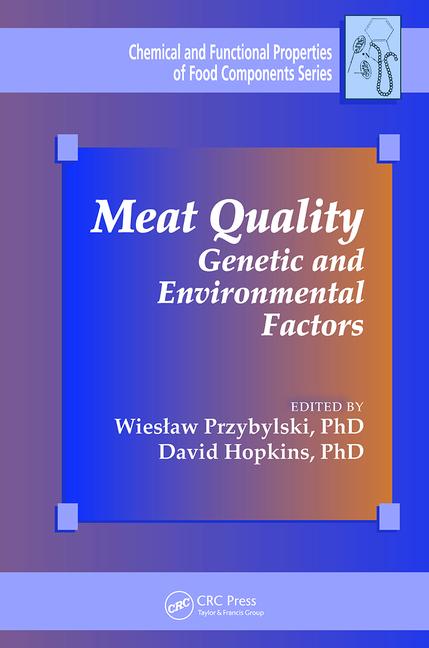PRODUCTION
The paperwork chase
Keeping HACCP plans updated and accurate is a necessary chore.

Keeping HACCP plans updated and accurate is a necessary chore.</dek>
Nobody ever goes into meat processing to spend their days filling out paperwork. Unfortunately, part of the cost of doing business is to ensure that a company’s Hazard Analysis & Critical Control Point plan is up-to-date and accurate.
A HACCP plan is, of course, a vitally important document, particularly in an industry like meat processing, where even a slight deviation from a process could make a product unsafe. Once created, the plan has to be updated regularly. Rodger Abbott of Abbott Consulting Group notes that annual reassessments are required for federally inspected plants, “or whenever any changes occur that could alter the potential hazards in the process – like a new piece of equipment.
“Even if no changes are required, I would add a note to the HACCP change log when you get a new stuffer or grinder, for example, and write ‘no changes required,’” he adds.
New products can bring their own changes to a HACCP plan as well. The addition of a cheese sausage, for instance, can introduce an allergen into a plant. Processing a beef-and-pork sausage in a plant that formerly produced only pork could raise the risk of E. coli and increase testing requirements, Abbott says.
While reviewing a HACCP plan, Abbott recommends getting onto the floor and walking through the production floor with flow chart in hand.
“It’s easy to overlook process steps when you work with it every day,” he says. “Start at receiving and physically walk through the process while you’re in production; that’s what your inspector or a 3rd party auditor will do.”
The amount of paperwork required for a HACCP plan can be significant and time-consuming, but Abbott points out that it doesn’t have to be the case. Some companies will develop a new form as a response to an NR (noncompliance record), which can become unnecessarily cumbersome after several years.
“They write down the same information on two or three different forms,” he adds. “I was in one plant that had a post-op inspection sheet to make sure everything had been cleaned, and then the same people would come back the morning and fill out the pre-op sheet to make sure it was still clean in the morning. That’s just silly.”
Abbott advises processors to think when they find themselves writing the same information down on multiple sheets of paper. Oftentimes, those forms can be combined into one. It may not seem like much, but if someone has to fill out 10 forms a day and finds a way to reduce it to eight, it represents a 20 percent reduction in time spent on paperwork.
Resources:?
www.fsis.usda.gov/wps/portal/fsis/topics/regulatory-compliance/haccp: This HACCP portal from the FSIS website offers resources specifically for small and very small plants.
www.aamp.com: “If you’re a small processor, you need to be a member of AAMP,” Abbott says. “They have tons of model plans for not just HACCP, but also Recall, Testing and so on.”
Local land grant universities: Ohio State, Wisconsin and Pennsylvania all have useful materials available online, Abbott says, and many others have resources to help small processors.
Federal or state inspectors: Abbott notes that inspectors are not technically allowed to give advice, so phrasing the question correctly is important.
“Outline what you have in mind, then say, ‘You’ve been in a lot of plants—what have you seen work in this situation?’” Abbott says. “Even grumpy inspectors are usually happy to help if you ask them this way—because if you’re doing HACCP well, it makes their job easier.”
Nobody ever goes into meat processing to spend their days filling out paperwork. Unfortunately, part of the cost of doing business is to ensure that a company’s Hazard Analysis & Critical Control Point plan is up-to-date and accurate.
A HACCP plan is, of course, a vitally important document, particularly in an industry like meat processing, where even a slight deviation from a process could make a product unsafe. Once created, the plan has to be updated regularly. Rodger Abbott of Abbott Consulting Group notes that annual reassessments are required for federally inspected plants, “or whenever any changes occur that could alter the potential hazards in the process – like a new piece of equipment.
“Even if no changes are required, I would add a note to the HACCP change log when you get a new stuffer or grinder, for example, and write ‘no changes required,’” he adds.
New products can bring their own changes to a HACCP plan as well. The addition of a cheese sausage, for instance, can introduce an allergen into a plant. Processing a beef-and-pork sausage in a plant that formerly produced only pork could raise the risk of E. coli and increase testing requirements, Abbott says.
While reviewing a HACCP plan, Abbott recommends getting onto the floor and walking through the production floor with flow chart in hand.
“It’s easy to overlook process steps when you work with it every day,” he says. “Start at receiving and physically walk through the process while you’re in production; that’s what your inspector or a 3rd party auditor will do.”
The amount of paperwork required for a HACCP plan can be significant and time-consuming, but Abbott points out that it doesn’t have to be the case. Some companies will develop a new form as a response to an NR (noncompliance record), which can become unnecessarily cumbersome after several years.
“They write down the same information on two or three different forms,” he adds. “I was in one plant that had a post-op inspection sheet to make sure everything had been cleaned, and then the same people would come back the morning and fill out the pre-op sheet to make sure it was still clean in the morning. That’s just silly.”
Abbott advises processors to think when they find themselves writing the same information down on multiple sheets of paper. Oftentimes, those forms can be combined into one. It may not seem like much, but if someone has to fill out 10 forms a day and finds a way to reduce it to eight, it represents a 20 percent reduction in time spent on paperwork.
Resources:
www.fsis.usda.gov/wps/portal/fsis/topics/regulatory-compliance/haccp: This HACCP portal from the FSIS website offers resources specifically for small and very small plants.
www.aamp.com: “If you’re a small processor, you need to be a member of AAMP,” Abbott says. “They have tons of model plans for not just HACCP, but also Recall, Testing and so on.”
Local land grant universities: Ohio State, Wisconsin and Pennsylvania all have useful materials available online, Abbott says, and many others have resources to help small processors.
Federal or state inspectors: Abbott notes that inspectors are not technically allowed to give advice, so phrasing the question correctly is important.
“Outline what you have in mind, then say, ‘You’ve been in a lot of plants—what have you seen work in this situation?’” Abbott says. “Even grumpy inspectors are usually happy to help if you ask them this way—because if you’re doing HACCP well, it makes their job easier.”
Looking for a reprint of this article?
From high-res PDFs to custom plaques, order your copy today!








